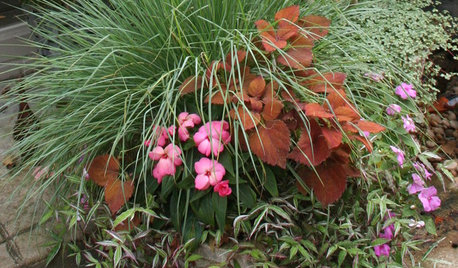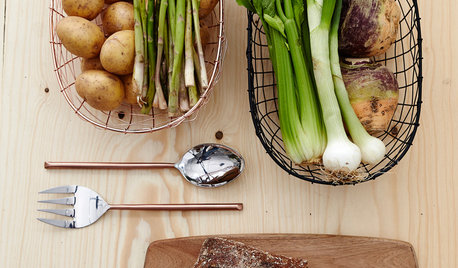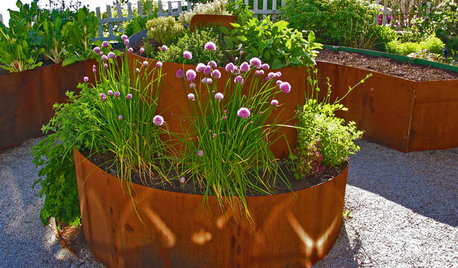Container Soil Basics: a compilation
lathyrus_odoratus
14 years ago
Related Stories

CONTAINER GARDENSContainer Gardening Basics: The Dirt on Soil
Learn the types of potting soil available and the best mixes to help your containers thrive
Full Story
CONTAINER GARDENSContainer Garden Basics: How and When to Water Potted Plants
Confused about soil moisture, the best time to water and what watering device to use? This guide can help
Full Story
CONTAINER GARDENSContainer Garden Basics: Mix Textures to Catch the Eye
A mix of textures makes for potted gardens where each plant has a special role to play
Full Story
GARDENING GUIDESGrow a Beautiful Garden in Alkaline Soil
Got alkaline soil? Learn how to manage it and the many beautiful plants that will thrive in this ‘sweet’ soil
Full Story
GARDENING GUIDESHouzz TV: Make a Worm Bin for Rich Soil and Happy Plants
A worm-powered compost bin that can fit under a sink turns food scraps into a powerful amendment for your garden. Here’s how to make one
Full Story
GARDENING GUIDESHow to Stop Worrying and Start Loving Clay Soil
Clay has many more benefits than you might imagine
Full Story
MATERIALSInsulation Basics: What to Know About Spray Foam
Learn what exactly spray foam is, the pros and cons of using it and why you shouldn’t mess around with installation
Full Story
GREEN BUILDINGInsulation Basics: Heat, R-Value and the Building Envelope
Learn how heat moves through a home and the materials that can stop it, to make sure your insulation is as effective as you think
Full Story
MOVINGYour First Home: Beautiful Basics and Multitaskers for Every Room
Here’s what to choose and what to avoid when outfitting a new house
Full Story
URBAN GARDENSContainers Make Growing Edibles a Cinch
If life hands you a lack of land, grow lemons — with a few basics, you can proudly reap the fruits, veggies and herbs of your labor
Full Story






lathyrus_odoratusOriginal Author
lathyrus_odoratusOriginal Author
Related Professionals
Wrentham Landscape Architects & Landscape Designers · Summit Landscape Architects & Landscape Designers · Matthews Landscape Contractors · Fair Lawn Landscape Contractors · Hannibal Landscape Contractors · North Highlands Landscape Contractors · The Villages Landscape Contractors · Buena Park Fence Contractors · Hayward Fence Contractors · Maynard Fence Contractors · North Miami Beach Fence Contractors · Olney Fence Contractors · Orlando Fence Contractors · Saratoga Springs Fence Contractors · Milwaukie Fence Contractorslathyrus_odoratusOriginal Author
lathyrus_odoratusOriginal Author
lathyrus_odoratusOriginal Author
lathyrus_odoratusOriginal Author
lathyrus_odoratusOriginal Author
lathyrus_odoratusOriginal Author
lathyrus_odoratusOriginal Author
lathyrus_odoratusOriginal Author
yellowthumb
lathyrus_odoratusOriginal Author
lathyrus_odoratusOriginal Author
lathyrus_odoratusOriginal Author
lathyrus_odoratusOriginal Author
lathyrus_odoratusOriginal Author
katskan41
rj_hythloday
achill3s
tapla (mid-Michigan, USDA z5b-6a)
lathyrus_odoratusOriginal Author
katskan41
rj_hythloday
kate40541
Pieter zone 7/8 B.C.
katskan41
lathyrus_odoratusOriginal Author
federal_hill
tapla (mid-Michigan, USDA z5b-6a)
JerryVentura Jordan
tapla (mid-Michigan, USDA z5b-6a)
amycasper
rdak
rdak
matt_tampa